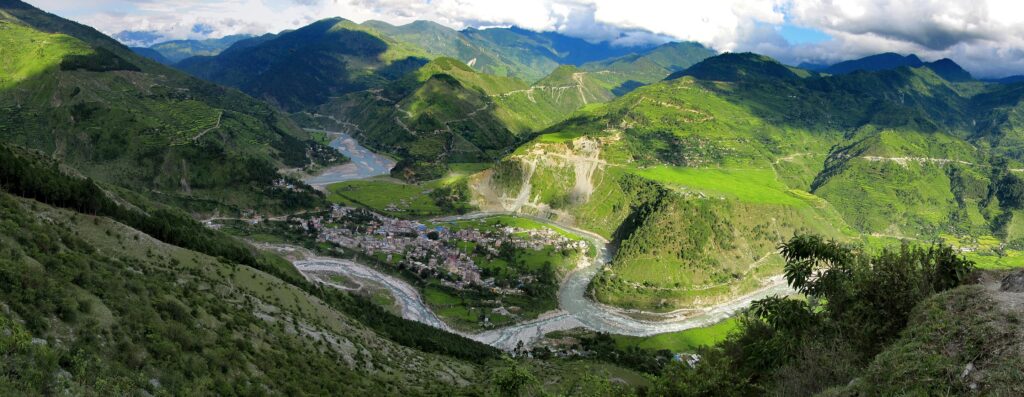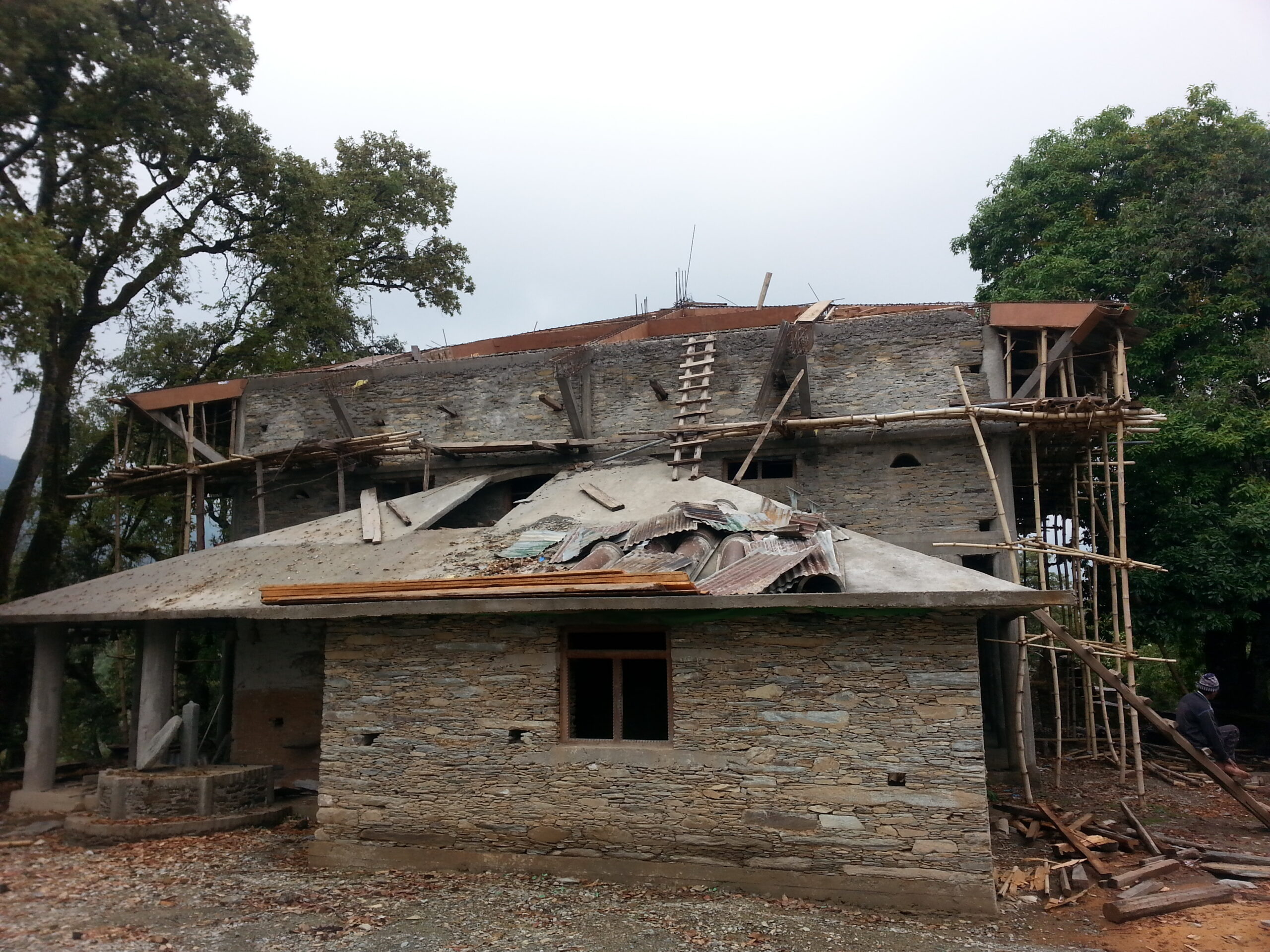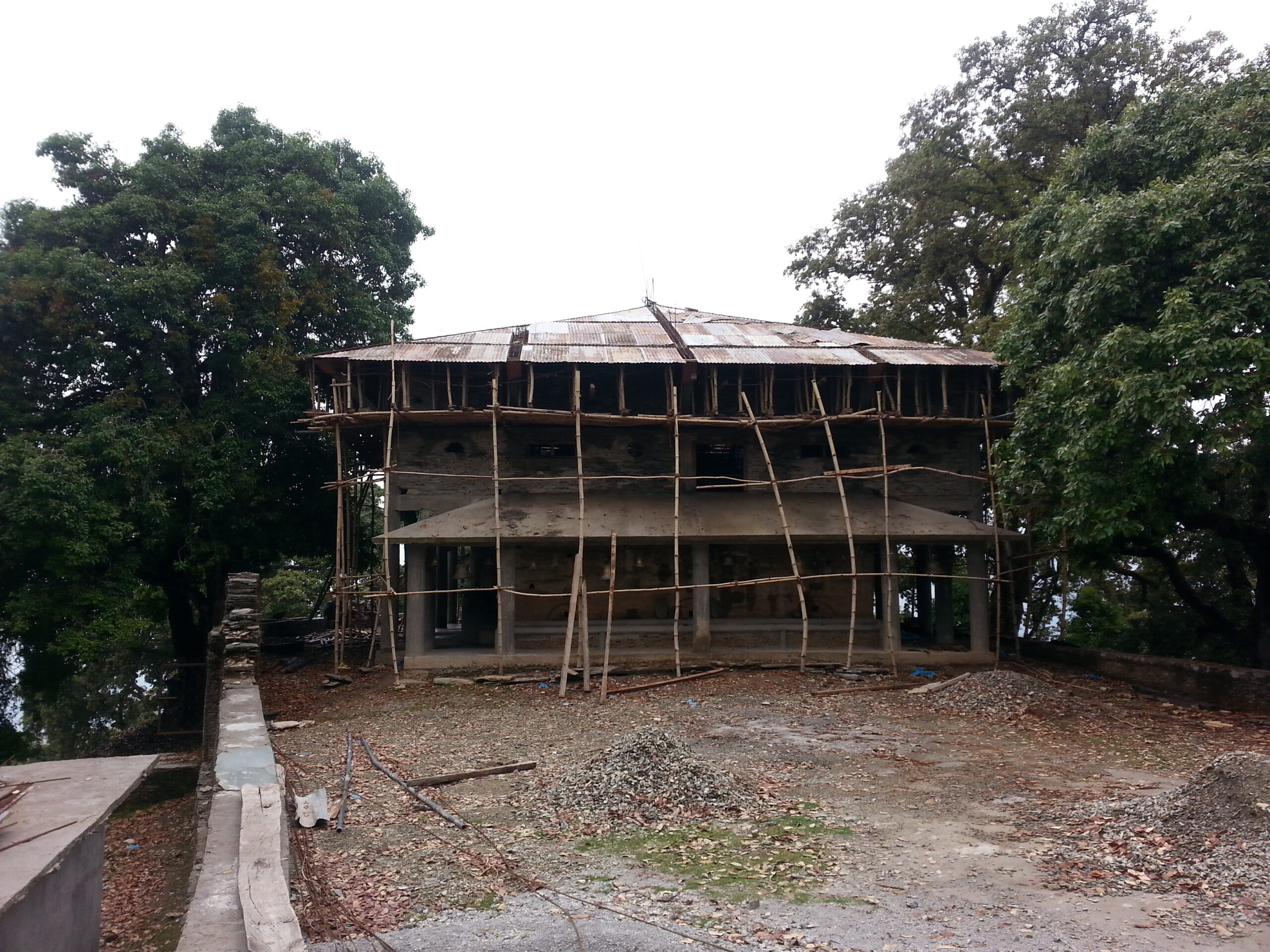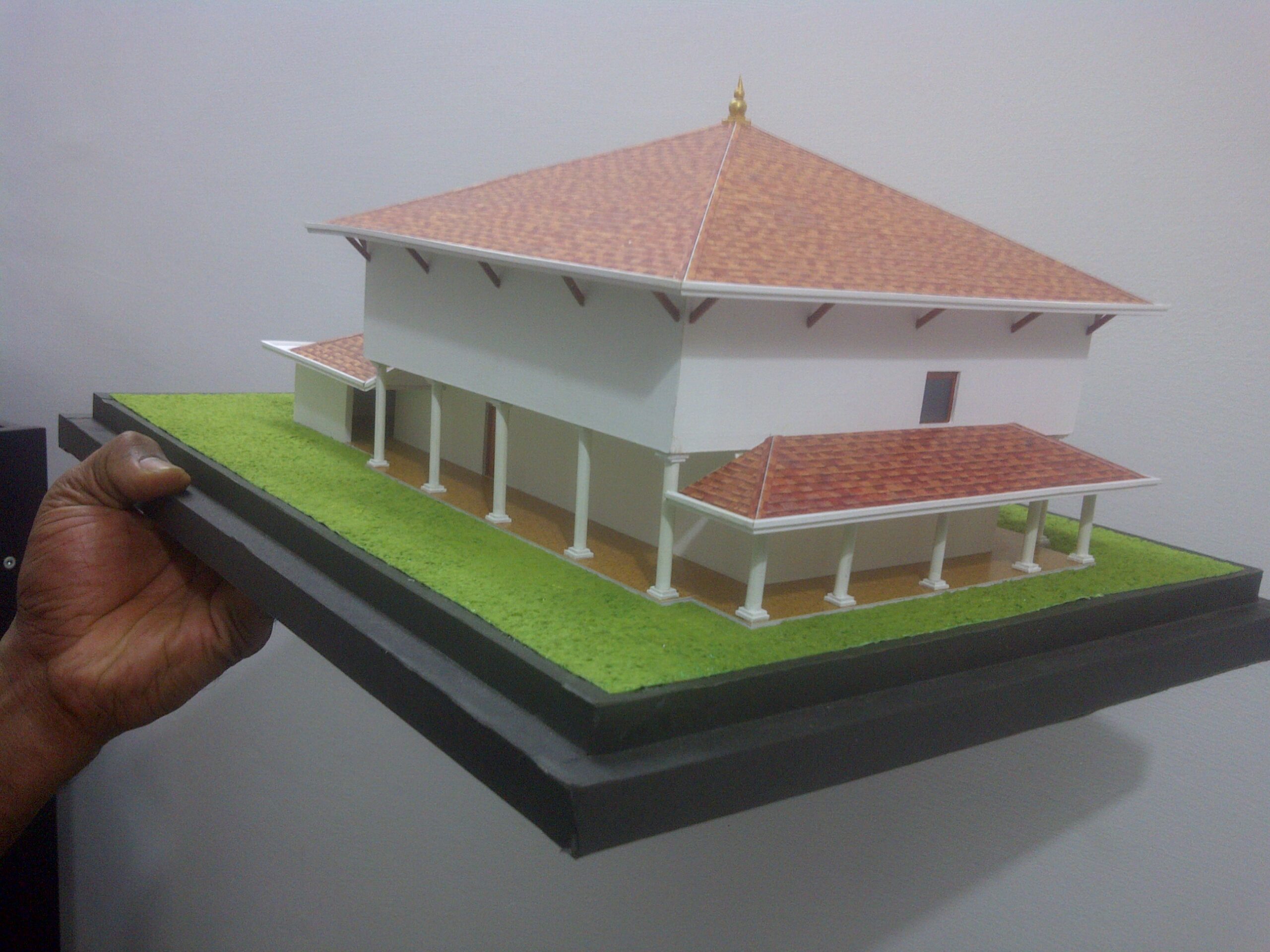
BANNI MASTADEVA CONSERVATION TRUST
Banni, Bajhang, Nepal
Masta, the guardian deity of Far Western Nepal, has its abode, Mastamanndu, on the Banni Hill from where one can survey a large part of Bajhang’s topography. Masta is the local incarnation of the Hindu deity, SHIVA, and Mastamandu is one of the most significant religio-cultural sites for pilgrimage. It is a revered religious site for local devout Hindus who think it their luck to have the opportunity to attend the regular prayers mainly conducted on Sundays and Wednesdays. Annual religious festivals like Kankre Aunsi (on the occasion of Sambatar Aunsi), Chaitali (on the occasion of Chaitra Sukla Trayodasi), Asade Astami, Ratedi (on the occasion of Krisnajanmatami), Deusedi (falls on the next day of
Krishnajanamastami), Naurata (during Navaratri), Pusyati (Poush sukla Astami), Sirupanchami (on the occasion of Basantata Panchami), apart from the regular Puja, are celebrated in and around the premises of the temple.
Kankeaunsi celebrated on the occasion of Sambatsar Aunsi marking the new year according to the Hindu tradition and Chaitali celebrated on the Chaitra sukla Trayodasi are the biggest festivals observed in Bajhang. Presumably, they are the largest religious festivals of the Far Western Region of Nepal. Ratedi celebrated on Krishna Janmastami, Navaratri puja conducted during Hindus’s major festival Dashain, Pusyati observed in the month of Poush (Poush Sukla Asthmi) and Sirupanchami celebrated on the occasion of Basantapanchami are other major religious festivals when thousands of Bajhangis gather at the premises of the temple for worship.
Kankre Aunsi celebrated on the last day of the dark fortnight in the month of Chaitra on the occasion Sambatsar Aunsi and Chaitali celebrated two days before the full moon night, thirteen days after the Kankre Aunsi on Chaitra sukla Trayodasi are not only the largest religio-cultural festivals celebrated in Bajhang, but also the largest in Far Western Nepal. Over 50 thousand people observe both these festivals celebrated for two days. These festivals do have both religious and socio-cultural significance. About the celebration of Kankre Aunsi and Chaitali, there are popular local myths. These myths give revealing details about how and why these festivals are celebrated.
Kankre Aunsi is the second largest festival, first largest being the Chaitali, of Bajhang observed in Mastamandu. On this occasion, all the Chhabises go to Mathilek and cut three Kankars, tall pine trees and bring them to three different locations of Chhabis. The process of bringing the Kankars from the alpine heights involves a great celebration in which every member of the family in Chhabis involves with pleasure. There is a typical myth about why these Kankars are cut and brought to the temple.
There are multiple mythical variations as follow:
One of the prominent myths suggests that Masta had 16 sisters, Devis. He was the only brother of the Devis. Once the demon Mahisashur caught Masta, chained him and imprisoned him under the lake at Tolyani where the demon dwelt. The demon who had imprisoned the guardian god started to kill and torture the local people. Only after Masta was imprisoned and the locals were subjected to demonic cruelty, Devis knew about their brother and the local devotees. They were worried. Among the 16 Devi sisters, Surma Devi was the most beautiful and charismatic. Worried about her brother and devotees, she appeared before ahishasur who was captivated by her beauty and started making advances. He was ready to do anything to get Surma. So Surma Devi proposed that she would be ready to marry him if he freed his brother form his prison under the lake and brought him back. Mahishasur agreed. When he
came back with Masta, She assaulted on Mahishasur and killed him and thus freed her brother and devotees from the fear of demon. Local people brought Kankars to celebrate the defeat of the demonic
power and the victory of the divine. This tradition has been the part of people sharing joy and happiness over the time. Many people argue about the significance of the Kankars and try to look for the reason
behind cutting trees, shaping them as Kankars and bringing them to the temple with great performance and celebration without letting the top of the Kankar break away. Trying to find reason behind the myths of bringing Kankars would be to try to rationalize the practice of faith. However we can look at the patterns of myths and explore what they suggest. From this perspective, we find multiple interpretations regarding the practice of Bannika Kankars.
One variation of the myth suggests that three Kankars symbolize husband, wife and her brother-in-law. Bohora’s Kankar stands for the husband, Dhami’s Kankar stands for the wife and Parimumli’s Kankar stands for the brother-in-law.
All the Chhabises join the Bohoras of Bannikot, Dhamis of Dhamigaun and Parimumlis of Parimunla village, go to Mathilek, the alpine forest, cut 40 to 75 feet pine trees in the evening, sacrifice hundreds of baby goat on the stumps of the felled trees and bring them down the mountain at night to three locations. The Kankars are brought with a fanfare and thousands of people are involved in transporting them. Panche bajas, local traditional drums and traditional pipes, sahanais, are played
throughout the night and the next day in the process of transporting them. The next day Bohora’s Kankar is taken to Talkot, Dhami’s to Madyanipata (Patichaur) near Panikhola and Parimunli’s Kankar is
kept in Rajantola, the premises of a local temple in Parimumla. Later in the day people pay a visit to Mastamandu and then pass the rest of the day playing Deuda. Around 30 to 50 thousand people observe this festival with religious awe, reverence and cultural interest. These Kankars are kept in the above mentioned location for 13 days until the day of Chaitali, another important festival.
There are socio-cultural and religious connotations associated with the three Kankars. From the religious stand point, Bohora’s Kankar stands for Masta, Dhami’s Kankar stands for Devi and Parimunli’s Kankar stands for the brother of Masta, a ferocious youth. They are brothers and sister. Durga is the eldest, Masta is the middle one and the other one is the youngest brother. When the sleeping Durga stands up at Panikhola, her sight falls on the youngest brother who gets energized on seeing her in hope of meeting her soon. As she heads towards Kankregada from Madyanipata, he too stands up at Tolyani and starts walking. As he walks, the monster Mahishasur who is hiding in the pond of Tolayni grabs his feet and pulls him down. The ferocious youth energized by the look of his sister and impatient to meet her quickly throws the monster flat on the bed of the pond and walks on his chest tearing it apart, thus killing him. He thus redeems the entire location from the fear of the monster, Mahishasur, who had once even caught Masta and taken him into custody to the bed of the pond. On killing the monster, the younger brother goes to Kangrgada from Tolyani in excitement. Both the brother and sister meet and embrace each other. After a short meeting and conversation, they both walk to Bannichaur. At Bannichaur, Durga tells her brother to go to the temple directly whereas she goes to Talkot to meet another brother and to accompany him to the temple. At Talkot , Durga meets the brother. They embrace each other as they are meeting after a long time, have a brief conversation and then go to the temple Mastamandu. There the three of them take rest free from the fear of the monster who had once attacked Masta. Thus this festival moves around the heroic actions of Durga, her love and care for her brothers. Masta, locally worshipped as shiva happens to be the brother of Durga in the folk vernacular Bajhangi culture. It seems to contradict the notion of Hindu pantheon where Parvati (Durga) is the consort of Shiva who had killed the demon Mahishasur to redeem Masta from demon’s captivity and local people from his torture. Likewise this version also contradicts the local myth that says that there were sixteen sisters of Durga and only one brother, Masta.
Local people also give a socio-cultural shade to what these Kankars stand for. They think that a relationship exists between the three Kankars. They assume Bohora’s Kankar to be the husband, Dhami’s Kankar to be the wife and Parimunli’s kankar to be the younger brother of the husband. On the day of Chaitali , the wife plans to go to Talkot where her husband is taking rest and from there they both go to the temple. But when the wife is on the way to Talkot, her brother-in-law meets her at Kankregada
and they have an affair. After an affair, the wife goes to meet her husband to prove her purity and the brother secretly reaches the temple where his elder brother and sister-in-law come later. The three Kankars are placed at the temple with the wife at the centre. This adulterous relationship indicates the clandestine promiscuous nature of human societies that needs purgation. The kankars at social level symbolically stand as the emblems of exposing social evils like adultery and revealing the need of
corrective measures to remove such evils.
Looking at these mythic variations, the first myth appears to be the most plausible where Devi kills the demon, liberates her brother and people from fear. Kankars and associative performance are simply local ways to celebrate the victory of Devi over the demon and to rejoice the state of freedom from terror.
CHAITALI is the largest festival of Bajhang celebrated thirteen days after Kankra Aunsi. On this day, Kankars kept in Rajantola, Madyanipata and talkot on the day of Kanke Aunsi thirteen days before are taken to Bannimandu with great pomp, show, performance and celebration. Thousands of people get involved in carrying these Kankar. The greatest show is when Parimumli’s Kankar is taken from Jhodokhena to Tolyani as if walking. Making a huge and heavy 20 to 30 meter Kanker stand straight and walk like a man requires lot of effort, skill and dexterity. People believe that such an act is possible due to divine presence. They also believe that the Kankar tore apart the chest of Mahishashur who lived in a pond in Tolyani. There is a faith that blood used to appear in lower stump of the Kankar in Tolyani. When Parimumli’s Kankar reaches Kankregada, both Dhami’s Kankar and Parimumli’s Kankar meet. They are put ina standing position there. All the people carrying both the Kankar collaboratively take them to Bannichaur from where Dhami’s KankarI is taken to Talkot and Parimumli’s to Bannimandu. After Bannikota’s Kankar and Dhami’s Kankar meet at Talkot, they are also taken to the temple. Then People return to Bannichaur is all the Kankars remain safe and do not break down. If they break, new Kankar has to be brought again. Such a situation prolongs Chaitali festival. If everything is safely done, People come back to Bannichaur and take part in Bhakundo (ball) competition. This ball competition takes place between Talla Chhabises and Malla Chhabises. When Bhakundo is over, the religious festival is over to give place to socio cultural festivities. Throughout the night, Deuda is palyed and the festival is celebrated. Presumably no festival is as bigger as this festival is in the Far Western Region of Nepal.
RATEDI is a purely religious festival celebrated within the premises of the temple. Almost all the people of Chhabis who are called chhabisya pay a visit to the temple at night. Every family brings milk in wooden pots called the theki and offers to Masta. It is believed that the milk offered to God Masta flows down to Gauryani through the natural water sprout. The second day Diusedi jatra is celebrated.
NAVARATRI is another major festival celebrated at the Mastamandu temple. It is celebrated for ten days from the day of Ghatasthapana to Bijayadasami. During Navaratri Durga saptasati is recited and Yagya is performed at the temple. This religious festival is part of the major Hindu festival, Dashain.
PUSYANTI and the pujas taking place at the temple on Sundays and Wednesdays are other major occasions when huge gathering of devotees takes place. Mastamandu is thus a very important cultural site of Bajhang.
Donation for the Construction of Mastamandu
On the personal initiation of the local people, the reconstruction of Mastamandu sarted taking place since 2012. Mr. Dhan Raj Joshi coordinated the entire project by primarily donating his monthly pension to the Trust. He continues his donation pension donation. With the help of local social workers, he started raising donation. Significant contribution was made by Bajhangis mainly by those living and working in Bajhang. Other local people’s participation remained equally important. The government’s and NGO’s support was praise worthy. A significant contribution was made by Parliamentarian Ms Chand Joshi who set apart one million rupees from the parliamentarian’s development fund. Local VDCs allocated some money for the project. Banni Mastadeva Conservation Trust expresses deep sense of gratitude to all individuals and organizations for material and psychological support to reconstruct this site of pilgrimage. The Trust would like to assure them that their support will develop Mastamandu as a leading religious, cultural and tourist site and Chhabis as a center of socio-cultural reawakening in future.
MAY GOD MASTA BLESS YOU ALL AND BRING YOU ALL HAPPINESS

Masthamandu Under Construction

Masthamandu Under Construction
